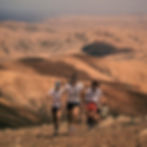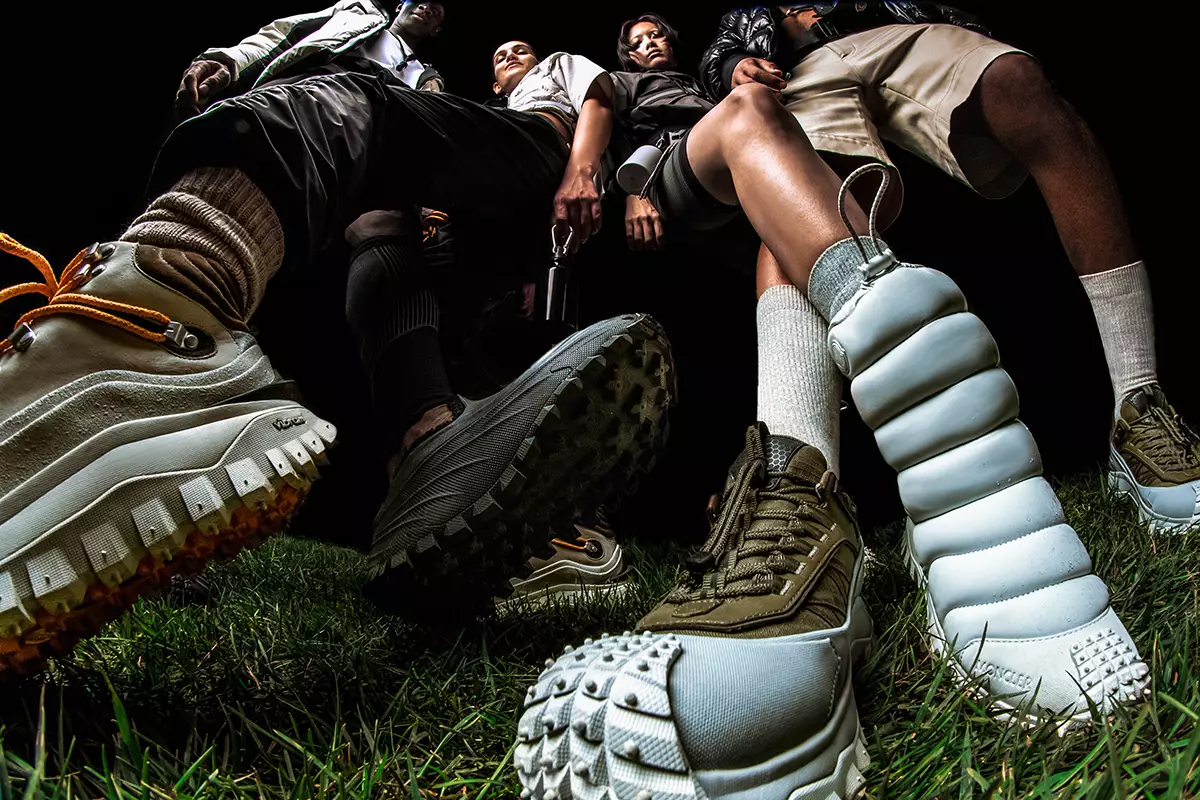Everyone Wants a Piece of Trail Running
- theoutdoorwall
- Mar 23, 2023
- 5 min read
In 2023, trail running is gaining attention in the media and in the fashion industry. Heritage brands, like Moncler and Zegna, expanded into the sport while established performance brands, like Asics and adidas, increased their presence in this contiguous sport. Everyone wants a piece of this new sport.

Somebody might argue that everything started at the Off-White fashion show in Paris in 2020, when Virgil Abloh, the founder and creative director of the brand, utilized Arc’teryx jackets as part of its collection and, later in the week, he showed up at his Louis Vuitton show wearing an Arc’teryx Alpha Jacket. This moment marked the first step of outdoor clothing into the fashion industry. The Gorpcore phenomenon was born that day. If you are a hiker or a trail runner or you spend a significant amount of your free time in the outdoors, Gorpcore can be defined as ‘wearing the clothes you wear in your free time in your everyday life as well’. All the streetwear brands tapped into this trend since 2020, capitalizing on social media popularity and functional clothing.

Fast forward to February 2023, Rihanna wore pair of Salomon Cross Low Drawstring by Maison Margiela during her Half Time performance at the Superbowl, a fashion takeover of an iconic trail running shoe and one of the many fashion collaborations from the French brand: KITH, Dover Street Market and Palace to name a few. Rihanna’s performance was only the last of a long series of celebrities wearing trail running shoes and clothes. At this point, running vests are part of fashion weeks as much as luxury handbags. #trailrunning has over 400 million views on TikTok - for what is worth in real life anyway. Trail running shoes made for the trails arrived and dominated the streets and the sneakers market, with Salomon being one of the top performers on the sneakers resale marketplace StockX in 2022.
In today’s world, there is no transition from the trails to the streets and vice versa: same products and same fashion attitude. With luxury and fast fashion brands on the look for the next opportunity to grow their revenues, trail running represents a new business segment in which participation grew by 106% last year and 231% in the last 10 years. Trail running is evolving from a niche to a mainstream sport which means access to more potential customers for brands.
No one can ignore us now. Dylan Bowman, pro trail runner and founder of Freetrail
The trail running niche is getting crowder and crowder with long-time and established brands facing threats from fashion-first brands and new start-ups combining performance and style. These actors can be bucketed into 4 groups of actors which compete and, sometimes, collaborate to gain a slice of this growing pie.
Outdoor: brands like Salomon and The North Face have been part of the sport before it was cool and they fuelled its growth. They are now trying to make their way to the streets through casual designs and collaborating with fashion and streetwear brands while maintaining major investment in the performance segment of the sport. Limited edition collaborations like Salomon x Maison Margiela or TNF x Gucci serve both brands to tap into new audiences by leveraging the rising popularity of the sport and broadly outdoors.
Performance not outdoor: brands like Asics and Lululemon are trying to enter the trail running world leveraging their expertise and natural affinity with sport. Asics’ trail running division has been the fastest growing for the Japanese brand, boosted by new trail running silhouettes and the expansion of its team, from 6 to 45, with the last addition being the 2022 World Champion Stian Angermund.

Outdoor fashion start-ups: brands like Norda and Satisfy Running brought fashion and design taste to the trail running world. Norda’s rise has been impressive since its foundation in 2021. In only two years, its shoes reached more than 100 performance and high-end fashion stockists. It is the recent news of the launch of their collaboration with the Italian luxury brand Zegna and their acquisition of a minority stake in the Canadian brand. On the other end, Satisfy Running has been pushing forward the clothing design with up-cycled vintage running tees and cutting-edge marketing campaigns around the world.
Fashion is not sitting still either. Moncler and Zegna chose the fast entry into trial running through the validation of Hoka One One and Norda respectively. Moncler went further launching the Trailgrip silhouette as part of its mainline footwear collection, clearly inspired by long days on the trails. Dior followed a similar pattern with its most recent sneakers release. Not only luxury but fast fashion too. Zara is not missing this opportunity and quickly adapted to the new trend with a clothing line inspired by trail running.
For different reasons, all these actors contribute to the growth of the sport and its community. The products, the races, the personalities, the FKTs, and the feeling of sharing and joy associated with a run in the trail contributes to building this community - read also subculture - cooler in the eyes of the mainstream consumer.
Trail culture is like skateboarding — even when you are not out practicing the sport, people still want to display they are part of the community, by wearing trail shoes or the technical clothing. Brice Partouche, founder of Satisfy Running
The current dynamic between trail running and fashion culture is nothing new. This is a story that keeps telling itself. Fashion and, more broadly, pop culture exploit subcultures and niches exposing them to the mainstream stage. Clothes are more than what we wear, they are the signal of belonging to a group of affine people. Brands have been selling this idea for years, changing the items and the subcultures to go after - wear a pair of Nike Dunks and be part of the cool kids skating in the 00s. Following the same paradigm, if you wear a pair of Salomon XT-6 in the streets you signal your belonging to the outdoor community, no matter if you have ever hiked or run a trail or not.
Dylan Bowman raised an interesting point on this during one episode of his Free Trail Podcast: "If I see someone at the coffee shop wearing a Free Trail hoodie, I immediately know that this person practices trail running and enjoys spending time outdoors. If I see someone wearing a trail running tee from the Zara collection, what does it say about this person? Are they into running at all?"
Ultimately, trail running as a sport has a lot to gain from the entrance of new players. More people will discover what trail running is, go on their first hike or run, buy their first pair of shoes, and consider signing up for a race. These are all benefits for a sport in the hunt for investments to step up to the next level: improve races' commercialization, increase athlete’s professionalization, fill the diversity gap, and establish development programs for young athletes, just to name a few.
The dilemma that lies below all of this is how far this can go. When a brand will go too far trying to attach itself to trail running? Will trail running remain true to its values of freedom and community while enlarging its participants base and becoming mainstream? Will trail running remain cool like skateboarding still is?




